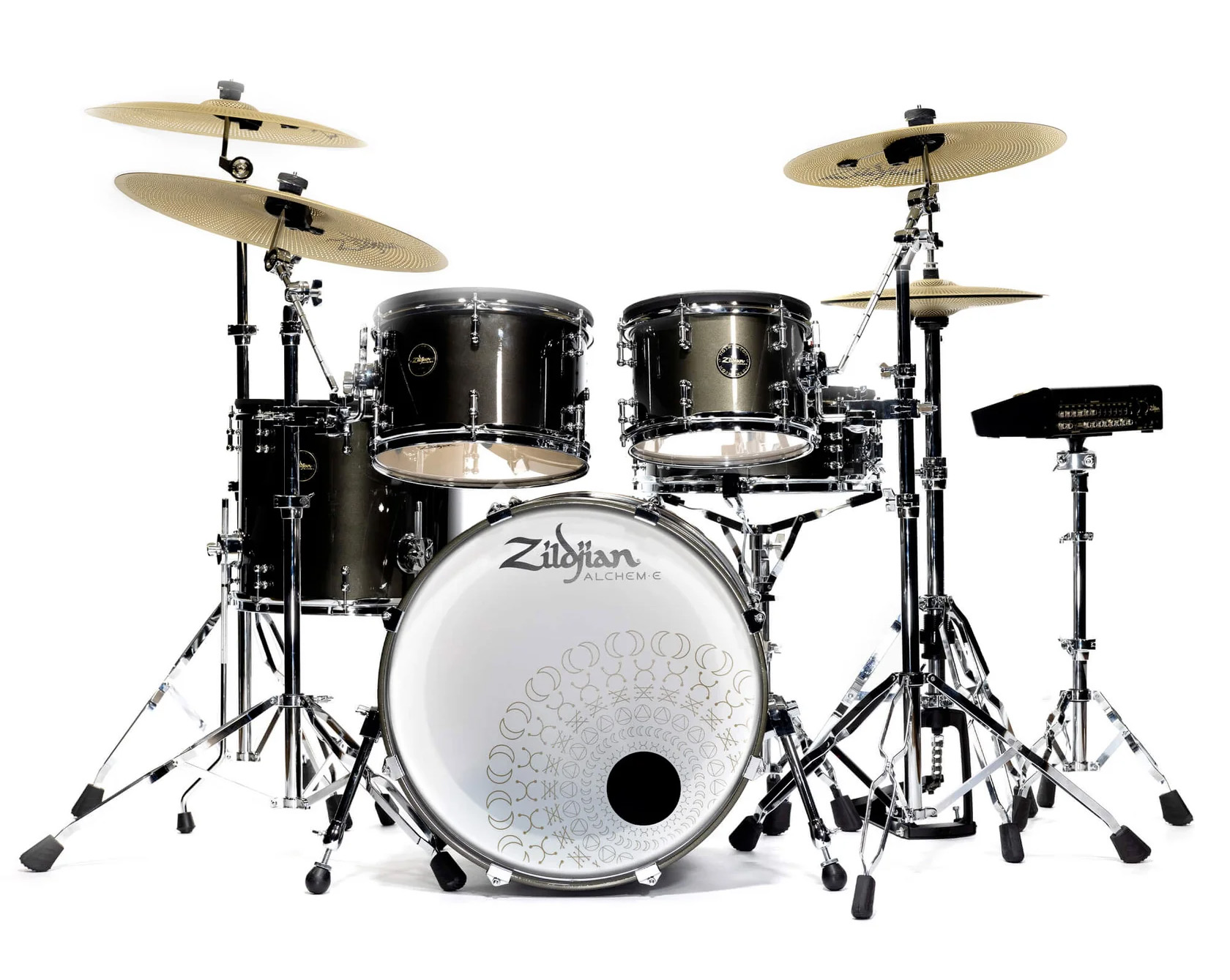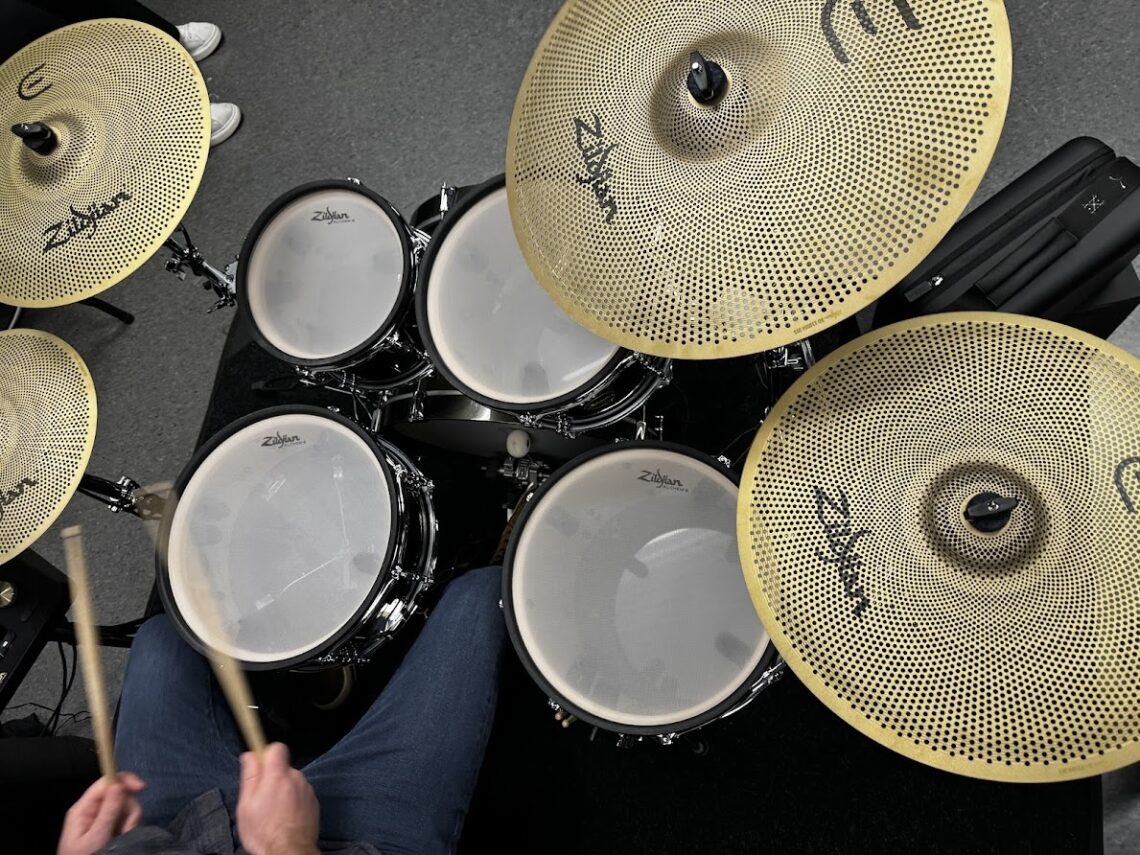We may earn revenue from the products available on this page and participate in affiliate programs. Learn more ›
Electronic drumsets have come a long way since the early days of fake-sounding samples and clunky rubber pads. Mesh heads and advanced computing hardware have made e-drums totally viable for recording and performing. Electronic cymbals, however, are a different story. Fake cymbals typically feel nothing like their traditional metal counterparts, which can really cramp a player’s style. It’s fitting, then, that Zildjian—a company continuously making cymbals since the 1600s—has discovered a solution to the e-cymbal problem and integrated it into its new Alchem-E drum kits.
How do electronic drums work?

E-drums work similarly to most other electronic instruments. An electronic keyboard, for instance, replaces hammers striking metal wires with sensors that cue electronic signals when you apply pressure to the keys. Electronic drums typically contain a sensor in a rubber pad or a traditional drum with a special mesh head. A central computing device triggers when you hit those inputs and translates action into whatever sound you desire. That can be heard through an amplified speaker, or, more importantly, they also work with headphones so that you can get in real practice sessions while drastically reducing noise to the outside world. To an external observer, it simply sounds like a series of clicks and taps instead of crashes and splashes, cracks and thwacks.
Zildjian’s Alchem-E drums offer real maple shells (a wood typically found in high-end kits) with mesh heads. The sensors inside detect multiple variables to tell how hard you hit and where the stick landed on the head. Hit the rim and drum simultaneously, and you get an extra-loud rim shot, just like with acoustic drums. Behind the kit, it all feels very natural. The bouncy mesh heads allow for rolls and precise changes in dynamics. They…
Read the full article here

